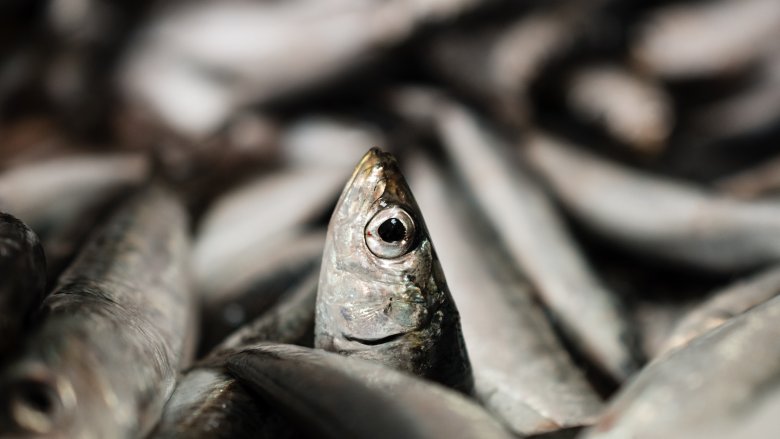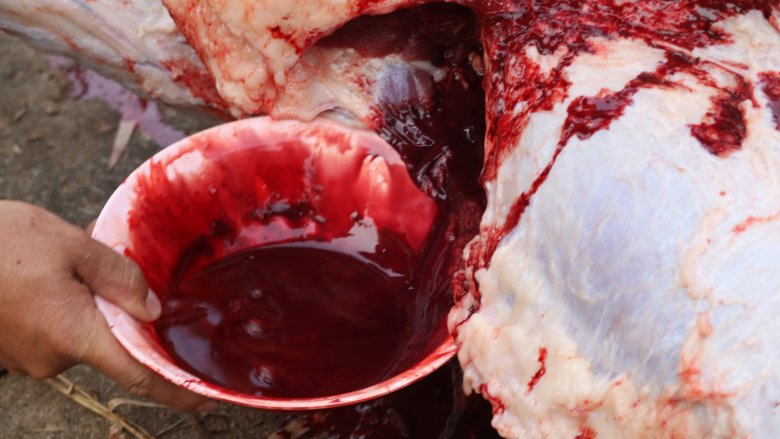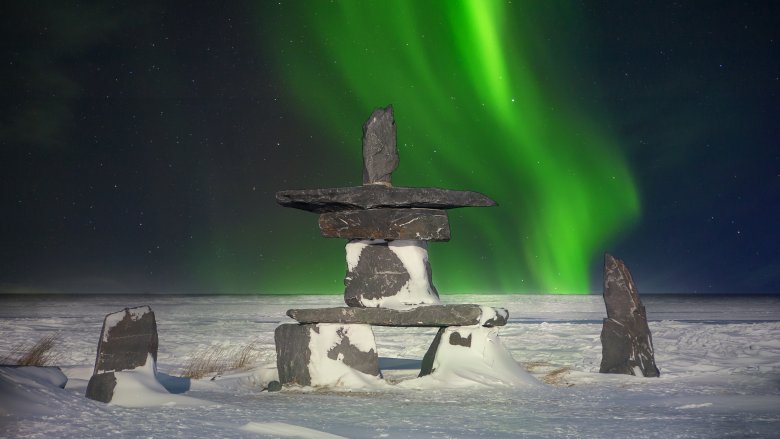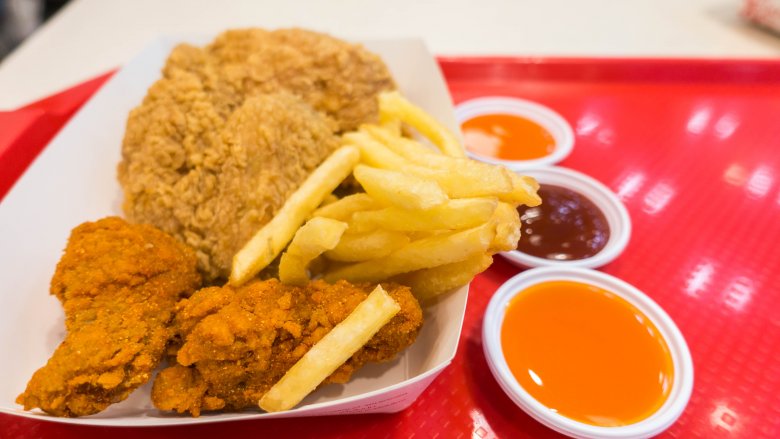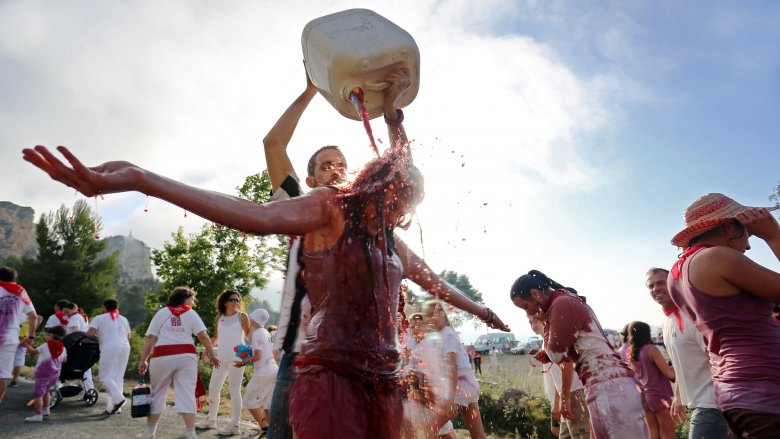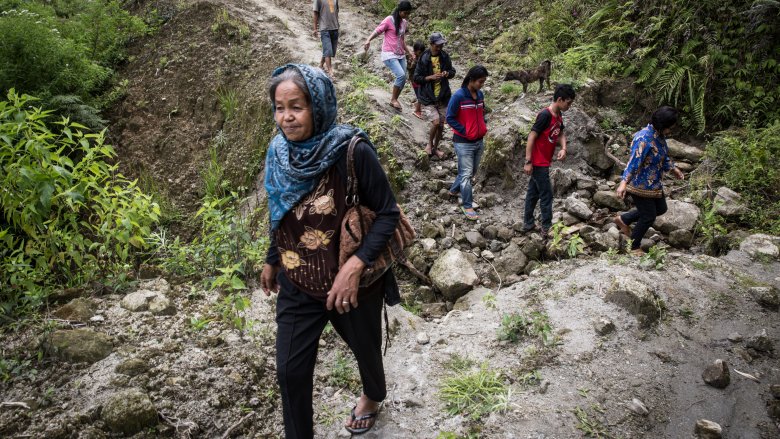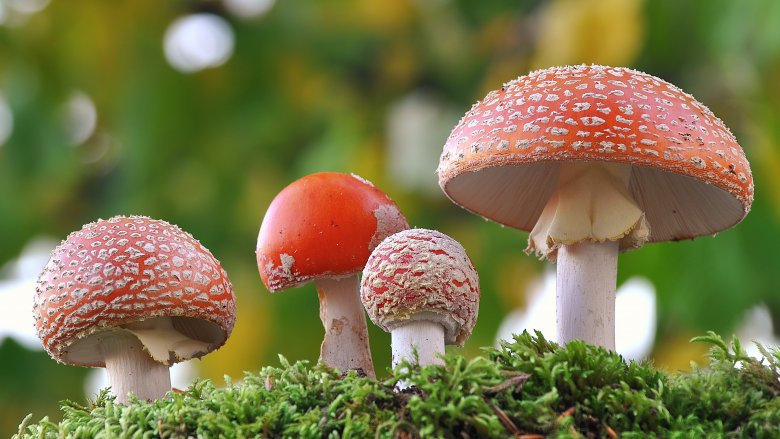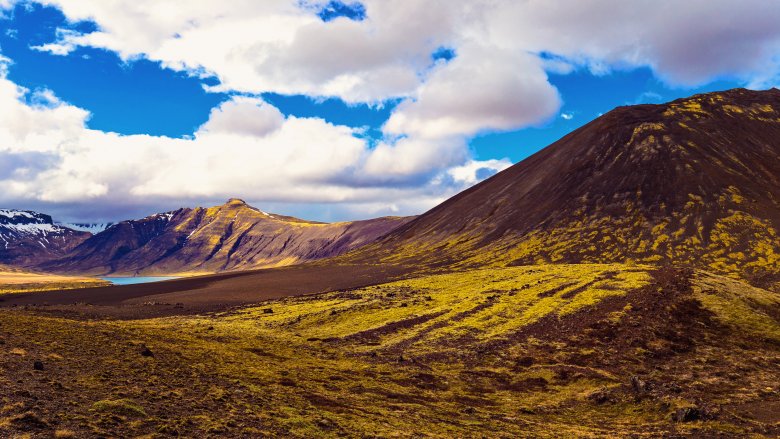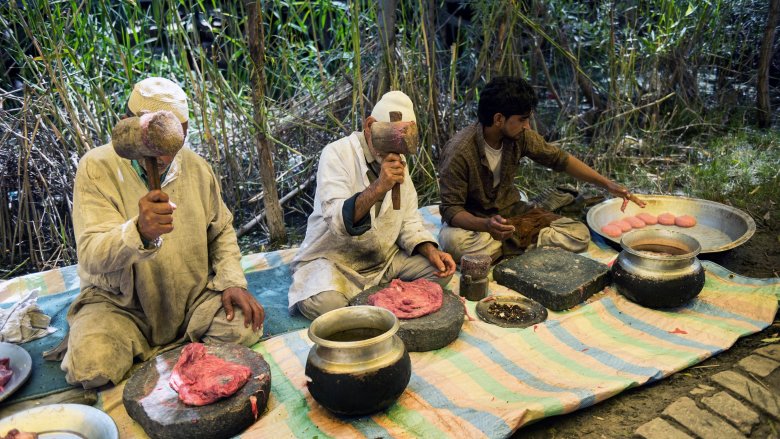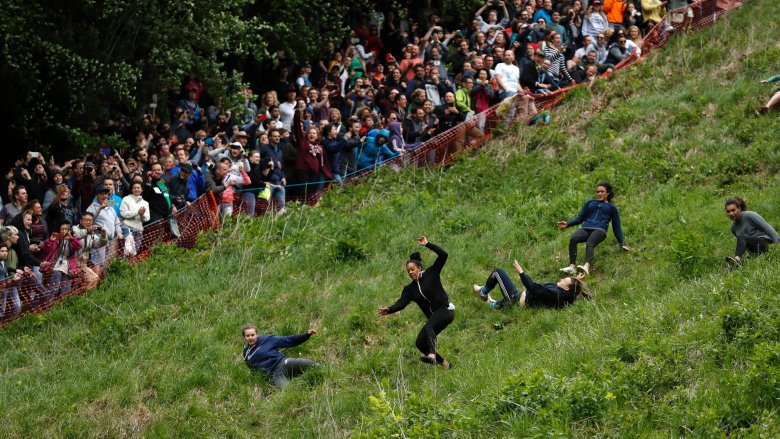Bizarre Food Rituals Around The World You Won't Believe Are Real
You don't have to be an intrepid explorer to know that the world is a very, very strange place. All across the globe, hundreds of different cultures exist and go about their lives, each compelled by their own history, traditions and odd little quirks. It doesn't really matter where you are — whether it's Kenya or Japan; England or Siberia or anywhere else beyond — the simple fact is that we've all got our own way of doing things. This is particularly true, of course, with the food we eat. Every culture has its own way of cooking and consuming food, and more than a few have their own utterly bizarre rituals (at least, as far as the rest of the world is concerned), in which religion, history or even circumstance has driven them to doing things that any other culture would, frankly, be shocked at. These are but a choice selection of the oddities our world has to offer.
The Massai's blood cows
The Maasai people are an ethnic group which occupies the south of Kenya and north of Tanzania. They're particularly well-known for their colorful fashion sense and, yes, their unusual rituals and customs. One of the stranger things they're known for is their use of cow's blood and milk in their diets. Milk is used by the Maasai for tea, butter and simply as a drink, while blood is drunk raw, cooked and often combined with milk. The Maasai cut the artery of the cow so precisely that the act of taking blood doesn't even kill the animal, thus preventing the loss of what is a highly-valued animal in their culture.
Blood is a frequently enjoyed ritual drink at Maasai weddings, though at major ceremonies the unfortunate cattle in question is usually killed. It's drunk straight from the wound as the animal is killed and passed around for the men to drink. We'll, uh, stick to the Champagne, thanks.
Northern winds of the Inuits
The Inuits are not like us. They inhabit the northern regions of Canada and Greenland, and are hard-wired to live and thrive in some of the harshest conditions known to man. They've never farmed — they can't — so they fish, hunt and trap to eat. Their customs regarding marriage, childbirth and death have been a source of fascination for hundreds of years.
In terms of diet, the Inuits will eat anything from walrus to whale to polar bear to whatever fish they can hunt from the ice waters of the Arctic. Very few spices or complex cooking methods are employed, and some food is eaten while still frozen. Naturally, they drink seal blood too. Much of that has to do with location more than tradition, but the final one is the kicker — it's considered good manners in some Inuit cultures to pass wind after eating, as a form of appreciation. Something tells us that's a tradition that wouldn't go over too well in many places.
A very KFC Christmas in Japan
You knew Japan would end up on this list somewhere, didn't you? Well, perhaps it's not too surprising that they've got their own fascinating food custom or two, but more surprising is the form it takes: The traditional Christmas dinner all across Japan is KFC. Yep, that KFC. It began with the release of a KFC Christmas "party barrel" in 1970 which sought to recreate the traditional American Christmas dinner, just with fried chicken in the place of the turkey. By 1974, the promotion had been extended across the nation and, with no other Christmas traditions really existing in Japan at the time, KFC simply filled the gap.
Today, the KFC Christmas meal includes fried chicken, salad and a more traditional Japanese Christmas cake. It's estimated that 3.6 million Japanese families eat KFC during the season, and food is ordered weeks in advance to beat the rush.
The Haro wine fight
Spain isn't exactly short on strange food events and rituals — Bunol's annual tomato fight, for example, is a legendary festival for locals and tourists alike. Less famous, however (despite arguably being much, much cooler) is the Haro wine battle. Haro, in Spain's northern La Rioja region, is a small but important part of the country's wine making tradition.
It's said that the festival can trace its roots back to the 13th century, when a tradition saw Haro's inhabitants mark its property lines between them and their neighbors in Miranda de Ebro, to prevent Haro being subsumed by that town. In the 17th century, the tradition broke down and the residents of each town settled their differences by throwing wine at each other, and thus a new tradition was born. Today, the revelers (dressed in white, of course) join a procession, and take part in religious mass before battling for hours against each other with buckets, water guns, hoses and anything else they can get their hands on. After the battle is over, the feast commences. Doesn't sound too bad, really.
Inviting the dead to dinner
The Toraja are a people indigenous to the Sulawesi region of Indonesia. Their story is similar to that of many east Asian tribes: a beautiful culture, amazing customs, hit by missionaries in the 20th century and are now thriving off tourism. What makes the Toraja unique, however, is their novel approach to death (be warned, there's some fairly gruesome imagery included in this source).
After a member of the Toraja passes away, they're not buried or burned. Instead, they're kept around by their family to continue taking part in the daily routine. The cadaver remains at home until their funeral, usually some months after their death. The Toraja believe that the soul of the deceased is still with them. And the new life of the dead doesn't simply end with their presence in the home — they're fed, too. The body joins the family at breakfast, lunch and dinner, and will 'enjoy' the meal along with the others.
Koryaks, mushrooms and urine
The Koryaks are a tribe of people indigenous to a coastal region in the very far east of Russia. They're extremely capable of enduring the harsh, cold lifestyle of northern Russia and tend to eat foods such as reindeer, fish and any berries they can forage. This might not seem too far out for a culture which has adapted to the cold, but there's something to be said for their more unusual approach to the consumption of mushrooms.
For hundreds of years, it's been known for the Koryak people to ingest hallucinogenic mushrooms for largely recreational purposes. All the classic symptoms are there: exhiliration, euphoria, and hallucinations, along with the natural comedown which consists of headaches and nausea. In that sense, there's not a lot of difference between the Koryaks and those surfer dudes down at the beach who never actually seem to do any surfing. Where the Koryak distinguish themselves, however, is in other Koryaks drinking the urine of those who've consumed the mushrooms, so that none of their hallucinogenic powers should go to waste. Perhaps unsurprisingly, the practice has been on the decline ever since vodka was introduced to the region.
Thorrablot festival
Thorrablot, named for the month of Thorri in which it takes place, is an Icelandic midwinter festival in which locals conjure up a feast derived from a tale in the Orkneyinga saga, in which the Norse offered sacrifices to Thorri in the midst of winter. At dinner, speeches are held, poems are recited and food is eaten. That food consists of such delicacies as singed lamb heads, cured ram's testicles and the notorious schnapps known as Brennivin.
Thorrablot is a fairly big deal in Iceland to this day, and is particularly widely celebrated out in the countryside beyond Reykjavik. The larger events even resemble festivals, complete with staged performances, music and after-dinner dancing. If you're after something a bit more low-key, however, many restaurants in Reykjavik itself will serve food fitting for the occasion.
Wazwan, the ultimate feast
Wazwan is a feast, a ceremony and an art form all rolled into one. It's a tradition held by the Kashmiris of northern India and originated in the 15th century when the invasion of the warlord Timur led to a great number of cooks (among others) settling in the Kashmir Valley. The feast itself consists of a staggering 36 courses, each of which is meticulously prepared and cooked using only the finest meats (lamb, chicken or mutton) and vegetables. Guests, in groups of four, share the meal from a platter known as a traem. Over the following hours, they're served seekh kebabs, korma, lamb ribs, chicken in countless sources, yogurt, chutney, meatballs, rogan josh, roasted lamb and more.
The Kashmiris take wazwan incredible seriously, viewing it more as an art to be perfected than a meal to be prepared, and the chef in charge — known as the vaste waze — is usually nothing less than a master at the craft.
Cheese rolling
Cheese rolling is exactly what it sounds like. It takes place every year at Cooper's Hill in Gloucestershire, wherein competitors, from the top of the hill, hurl themselves down it in order to catch a large wheel of cheese which has been released. Whoever reaches the bottom first wins the cheese. The event has been taking place for hundreds of years, according to the organizers, and is likely to have originated as a form of fertility rite.
The slope itself has a gradient of 1:2 (and 1:1 in some places) and is uneven enough to cause fairly regular injuries every year. The cheese itself is provided by local cheesemakers and has always been legit, save for the period of 1941-1954 in which rationing meant that a wooden replacement cheese had to be used instead.
The Seething Sardine Festival
Impressively, however, Cooper's Hill's cheese rolling isn't even the weirdest British food festival out there. That title goes to the Seething Sardine Festival, which takes place every year in Surbiton, because Seething isn't actually a real place. During the sardine festival, crowds gather in the town before following a number of fisherman down to the River Thames, to encourage and support them as they try to catch as many sardines as they can, despite sardines not existing in the Thames in any capacity whatsoever.
Afterwards, when the sardines haven't been caught, four giant guinea pigs lead the crowds back to the local Claremont Gardens for a BBQ, music and games, most of which are themed around sardines. It's probably best not to question it, really.
